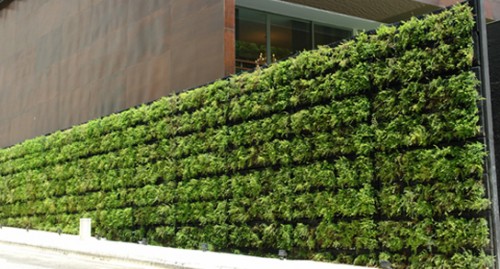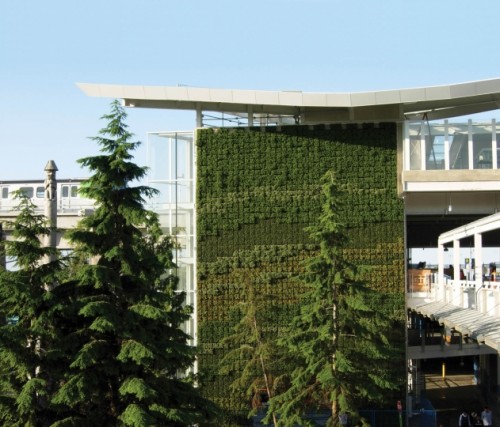Green walls are trendy and fashionable while they offer a perfect green setting. Architecture now abides by the principles of sustainability. This is not just a result of the economic downturn but is also expressive of a desire in man to live in harmony with nature and without exploiting it. Green walls are now a growing trend and here are some of the kinds.
Climbing facades
The best way to imitate nature would be using simple climbing plants on the wall. For climbing façades, desired plants should be either established on the ground or planted at the base of the wall that is to be covered, in suitable troughs. The wall would have green covering by allowing a framework on them so that the plants can climb up in a desirable way. The required framework can be created with the help of steel cables, trellises, and mesh frames. The choice of a suitable plant is important in green walls with climbing facades. For instance, the ivy is a great climber and is most suitable for the purpose. Yet another way to create a climbing façade on the wall would be by planting on top of the wall to let the plants trail down.

Modular living walls
The systems that are needed for creating modular living walls may be said to be more sophisticated than that are required for climbing facades. There are two different techniques that can be seen in the building and designing of the modular living walls or green walls. They are:

1. Hydroponic or soil-less
This particular technique is based on the consideration that plants can grow without soil too. What the plant basically requires from the soil is water, minerals, and a mechanical support to the roots for supporting their structure. The hydroponic systems are grown on panels that are constructed from before. Following this, they are installed vertically making use of a special growing medium that offers support to the roots. These panels are taken to the site when they are ready and following this they are attached to the framework on the wall which is to be covered.
2. Substrate or soil-based
In this technique, molded troughs are used. There may be containers that are attached to or built on the existing wall or a similar structure that is to be covered. Planting in the technique is done on a substrate that is soil based and similar which is used in the process of installation of green roof. Here the substrate is formed by combining lightweight recycled materials such that it contains the nutrients rightly balanced and a free medium for draining. This also lowers the cost of installation.
Green walls are the most sustainable alternatives to traditionally designed walls where they make use of sustainable and recycled materials. Not only do they bring nature near us but also beautify the place naturally.

COMMENTS